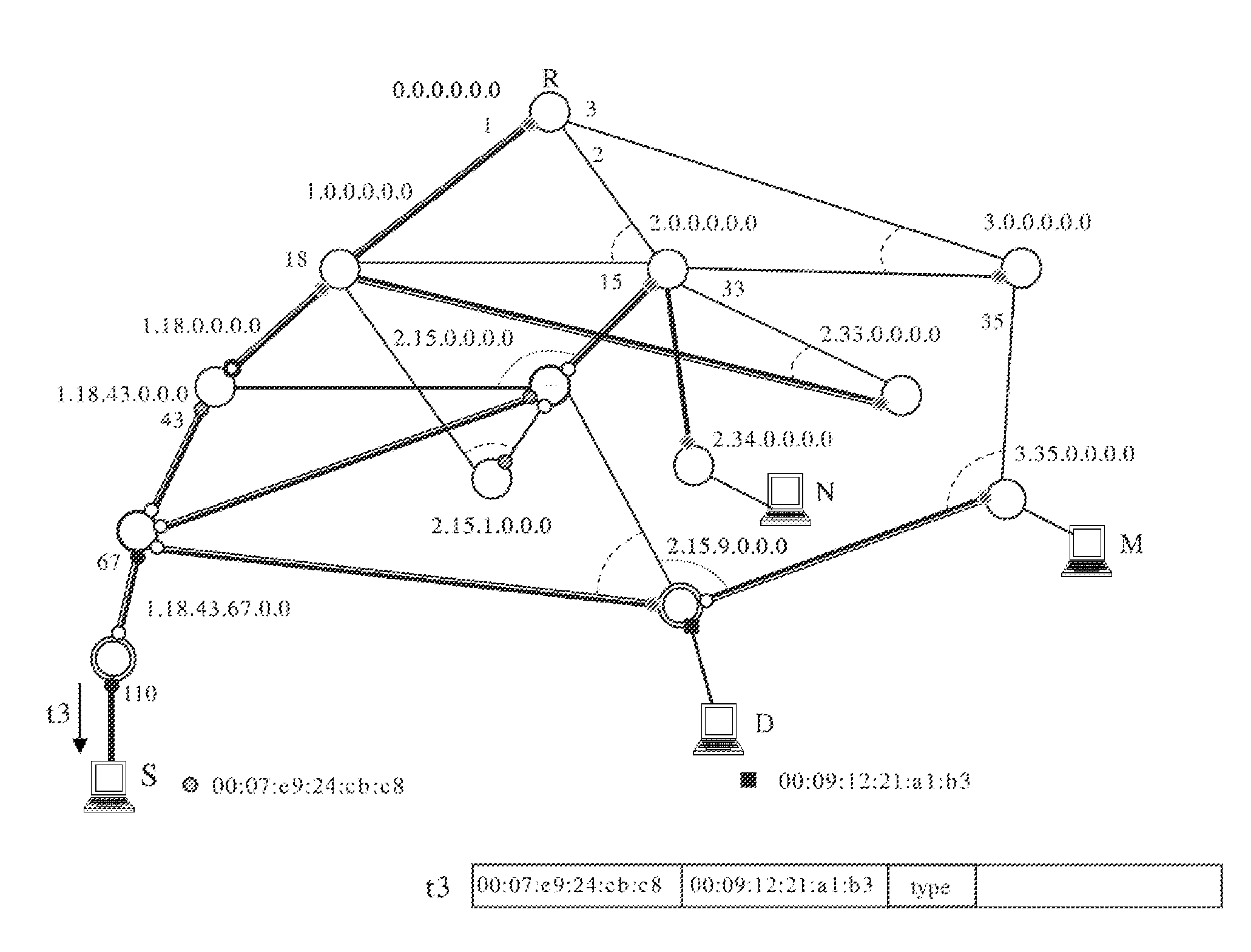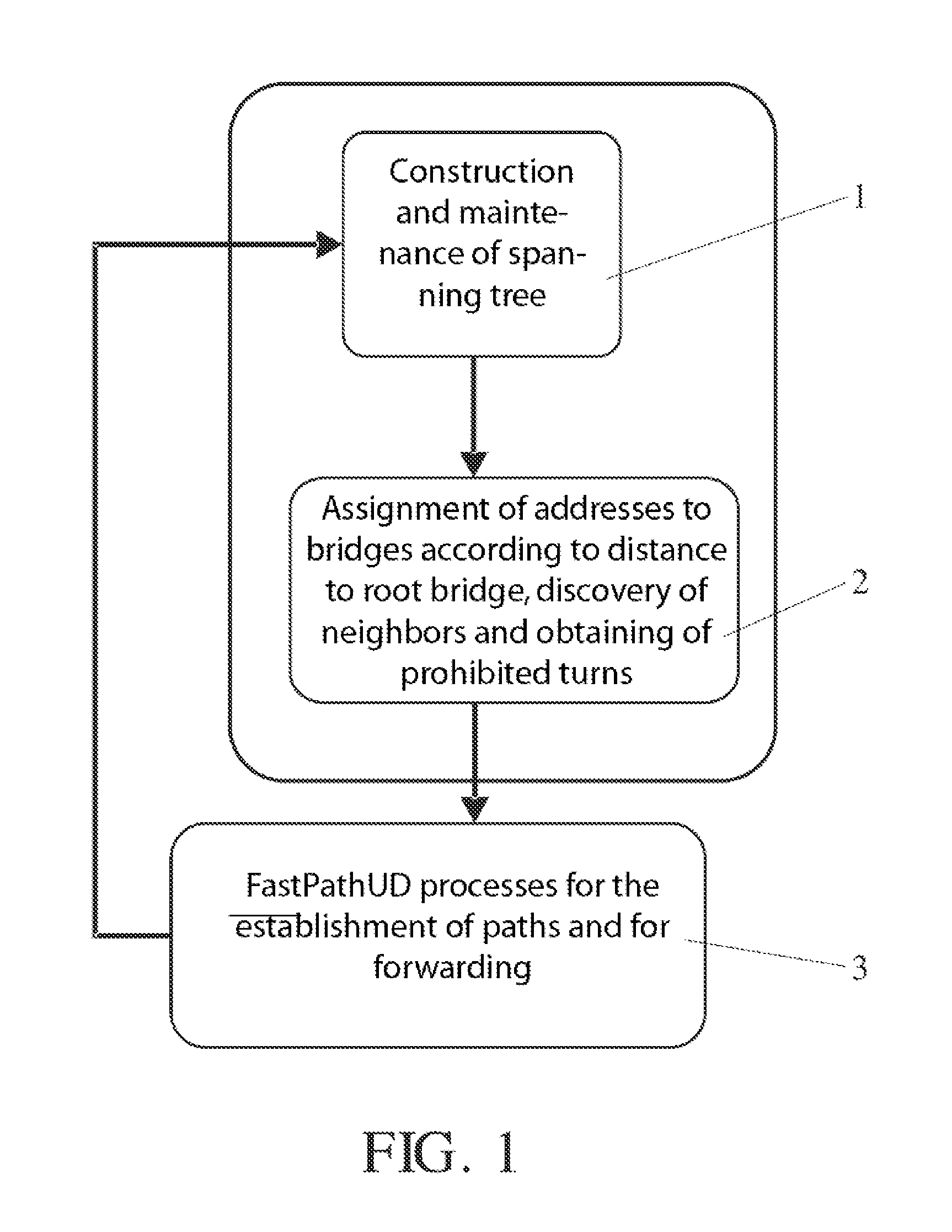Data frame routing method and network bridge
a data frame routing and network bridge technology, applied in the field of information and communication technologies, can solve the problems of unicast routing between nodes, large amount of expensive infrastructure is underused, and cannot solve the problem of reconfiguration of the tree, so as to prevent unnecessary broadcasting of frames through the tree, control and robust proactive routing, the effect of small number of mac addresses
- Summary
- Abstract
- Description
- Claims
- Application Information
AI Technical Summary
Benefits of technology
Problems solved by technology
Method used
Image
Examples
Embodiment Construction
[0028]The present invention solves the problem set forth above in each and every one of the different aspects mentioned, conceiving a routing protocol which operates in the user plane (routing data frames) within the data link level (second OSI layer).
[0029]In this context, that of the routing protocols mentioned herein:[0030]control plane is understood as the plane relative to the protocol control messages exchanged between nodes, such as bridge protocol data units (BPDUs, defined in the 802.1D standard).[0031]user plane refers to the frames sent by the users and routed by the nodes.
[0032]The data frame routing protocol which is proposed, herein called FastpathUD protocol and thus referred to hereinafter, in turn comprises:
[0033]A protocol for the creation (or establishment / construction) and maintenance (configuration and reconfiguration) of a spanning tree assigning consecutive addresses in an ordered manner to the network bridges according to their increasing distance or cost to ...
PUM
 Login to View More
Login to View More Abstract
Description
Claims
Application Information
 Login to View More
Login to View More - R&D
- Intellectual Property
- Life Sciences
- Materials
- Tech Scout
- Unparalleled Data Quality
- Higher Quality Content
- 60% Fewer Hallucinations
Browse by: Latest US Patents, China's latest patents, Technical Efficacy Thesaurus, Application Domain, Technology Topic, Popular Technical Reports.
© 2025 PatSnap. All rights reserved.Legal|Privacy policy|Modern Slavery Act Transparency Statement|Sitemap|About US| Contact US: help@patsnap.com



